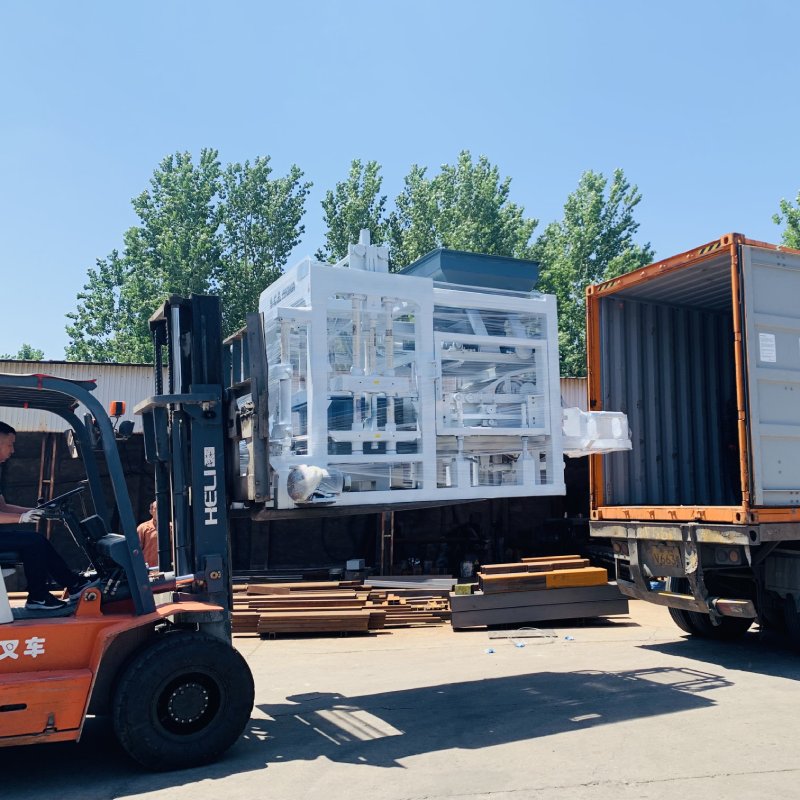
Image source Aiwei Block Machine
Modern Approaches to Block Design and Construction
Introduction
In the world of construction, the evolution of block design and construction techniques is integral to creating structures that are not only functional but also aesthetically pleasing, sustainable, and efficient. Modern approaches to block design and construction have redefined the way buildings are conceived, designed, and built. This article explores the innovative strategies and technologies that are shaping the future of block design and construction, emphasizing their impact on architectural creativity, structural integrity, and sustainable building practices.
A Shift in Design Philosophy
Traditionally, blocks were viewed as simple building components, but modern approaches have transformed them into versatile design elements that contribute to the overall aesthetics and functionality of a structure.
Innovative Block Materials
- Lightweight Concrete Blocks: Lightweight concrete blocks offer reduced structural load while maintaining durability, making them ideal for multi-story constructions.
- Insulating Concrete Blocks: These blocks incorporate thermal insulation properties, enhancing energy efficiency and reducing heating and cooling costs.
Advanced Block Design Techniques
- Modular Design: Modular block systems allow for greater flexibility in creating unique patterns, shapes, and textures that cater to architectural visions.
- 3D Printing: 3D printing technology is revolutionizing block design by enabling the creation of intricate and customized blocks with minimal waste.
Sustainable Construction with Modern Blocks
- Green Building Blocks: Sustainable block materials, like autoclaved aerated concrete (AAC), contribute to green building practices by reducing carbon emissions and resource consumption.
- Passive Solar Design: Solar-optimized block designs enhance energy efficiency, utilizing the sun’s natural heat and light to reduce energy demands.
Structural Innovation in Block Construction
- Interlocking Systems: Interlocking block systems eliminate the need for mortar, reducing construction time and enhancing structural stability.
- Reinforced Block Walls: Steel-reinforced block walls provide enhanced structural integrity, allowing for taller and more robust constructions.
Smart Technologies in Block Construction
- Integrated Insulation and Wiring: Modern block designs incorporate space for insulation and electrical wiring, streamlining construction and reducing post-construction work.
- Smart Blocks: IoT-enabled blocks can monitor building conditions, adjusting temperature and lighting to optimize energy consumption.
Real-World Applications
- Park Royal Tower, London: The tower’s distinct block design maximizes natural light and ventilation while providing visual interest.
- Oasia Hotel Downtown, Singapore: This hotel features a striking facade created by using modular blocks with ample greenery.
Challenges and Considerations
- Cost Implications: Implementing innovative block designs and construction techniques may incur higher upfront costs.
- Skill Training: Construction professionals need training to effectively execute modern block construction methods.
The Future of Modern Block Design and Construction
- Parametric Design: Computer-aided design tools enable architects to experiment with intricate block designs that were previously challenging to create.
- Nanoengineering: Advancements in nanoengineering could lead to blocks with enhanced thermal and mechanical properties.
Conclusion
Modern approaches to block design and construction are reshaping the architectural landscape, offering architects and builders a playground of creative possibilities. From innovative block materials to sustainable practices and technological integration, these approaches are not only enhancing the aesthetics and functionality of buildings but also contributing to a more sustainable and energy-efficient future. As the construction industry continues to evolve, the intersection of creativity, technology, and sustainability will define the way we design and build structures for generations to come.
